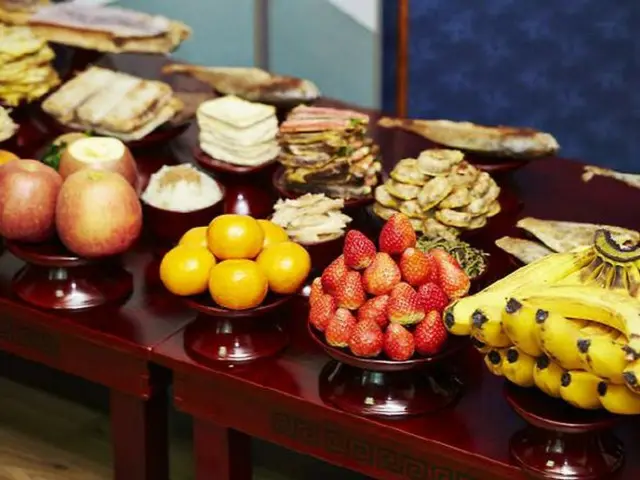The sigh only deepens. According to Korea Price Information, a specialized price research organization, on the 12th, the cost of offerings for Seollal this year for a family of four at a market such as a shopping district is 300,000 won (about 3.
The survey found that the average cost for a meal is 20,000 won (approximately 43,000 won) at a supermarket, and 400,000 won (approximately 43,000 won) at a large supermarket. In particular, the cost at a large supermarket is 35.4% higher than at a market such as a shopping street.
This is the highest level ever recorded, and Korea Price Information analyzed that this was mainly due to the fact that the prices of fruits and vegetables soared in the aftermath of the abnormal weather, which led to an increase in the cost of offerings.
When shopping at markets such as shopping streets, the prices of fruits and vegetables have risen by 57.9% and 32.0%, respectively, compared to last year's Seollal.
The prices of vegetables, namul, seafood and snacks were found to be at the same level as last year. Items that saw the most notable price increases were pears and apples. The price of three Fuji apples increased by 15,000 yen last year.
The price of a single pound of rice rose from 1,600 won (US$1,600) to 18,000 won (US$1,900) this year, a 20.0% increase. The price of a single pound of rice (three pieces) rose from 13,500 won (US$1,400) to 27,000 won (US$1,700).
The price of fruit rose twice as much to 1,000 won (about 2,900 yen). Korea Price Information said, "Fruit prices rose again this year due to bad weather, just like last year. Apple prices rose during Seollal last year,
The price of pears has risen this year," he said. At shopping malls and other markets, the price of radishes has risen from 2,000 won (US$2.50) last year to 4,000 won (US$4.50) and Chinese cabbage is now 4,000 won (US$4.50) per stalk.
The price has risen by 100% and 75% from 1,000 won (about 430 yen) to 7,000 won (about 750 yen), respectively. This is due to the fact that the production volume decreased due to poor growth last summer and the supply has decreased due to the recent cold wave.
This is the result of a combination of factors including a decline in prices. Even at large supermarkets, the prices of fruits and vegetables increased by 48.9% and 26.4%, respectively, compared to the previous year, while the prices of herbs and seafood increased by 5.5% and 4.9%, respectively.
The price of Fuji apples (3 pieces) rose to 21,240 won (US$23) this year, up 7.4%, and the price of pears (3 pieces) rose from 17,970 won (US$19) to 34,960 won.
The price of the yuan rose to 1,000 won (about 3,700 yen), nearly doubling. Lee Dong-hoon, head of the Korea Price Information team, said, "Prices have been rising due to the earlier than average Seollal and the recent cold wave.
"Also, the announced prices do not reflect the government's price stabilization measures for the New Year, so it would be wise to actively take advantage of this to spend," he said.
I did.
2025/01/12 19:04 KST
Copyrights(C) Edaily wowkorea.jp 99

